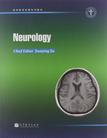医学教育改革系列教材
2012-8
贾建平 高等教育出版社 (2012-07出版)
贾建平 编
215
This Neurology textbook is intended for international medical students and bilingual education in Chinese medical students. We hope it will also be useful for neurologists, non-neurologist cliniaans, nurses, and other healthcare workers. As a textbook mainly for medical students, we tried to keep the content direct and clear. Only widely accepted notions and facts are included, rather than unsupported opinions or recent progress in research. Compared with other Neurology textbooks in English language, this textbook puts more emphasis on anatomy of nervous system, principles of topical diagnosis and neurological examination.
Chapter 1General Introduction Chapter 2Overview 2.1 Cranial Nerves 2.2 Sensory System 2.3 Motor System 2.4 Reflexes 2.5 Central Nervous System 2.6 Disturbance of Consciousness 2.7 Diagnostic Procedure and Principle of Neurological Disorders Chapter 3Neurological Examinations and Diagnostic Tests 3.1 Neurological Examinations 3.2 Neurological Diagnostic Tests Chapter 4Cerebrovascular Diseases 4.1 Transient Ischemic Attacks 4.2 Cerebral Infarction 4.3 Intracerebral Hemorrhage 4.4 Cerebral Venous Thrombosis Chapter 5Meningitis and Encephalitis 5.1 Introduction 5.2 Meningitis 5.3 Encephalitis Chapter 6Peripheral Neuropathies 6.1 Introduction 6.2 Guillain-Barré Syndrome(GBS) 6.3 Chronic Inflammatory Demyelinating Polyneuropathy(CIDP) 6.4 Idiopathic Facial Palsy (Bell's Palsy) Chapter 7Neurodegenerative Diseases 7.1 Parkinson's Disease 7.2 Motor Neuron Diseases Chapter 8Demyelinating Diseases 8.1 Demyelinating Diseases 8.2 Myelitis Chapter 9Epilepsy 9.1 Introduction 9.2 Etiology of Epilepsy 9.3 Basic Mechanisms Underlying Seizures and Epilepsy 9.4 Classification of Epileptic Seizures 9.5 Diagnosis and Differential Diagnosis 9.6 Treatment of Epilepsy Chapter 10Disorders of Neuromuscular Junction and Myopathy 10.1 Myasthenia Gravis 10.2 Muscular Dystrophy 10.3 Polymyositis Chapter 11Migraine 11.1 Introduction 11.2 Etiology 11.3 Pathogenesis 11.4 Clinical Manifestation and Classification 11.5 Diagnosis and Differential Diagnosis 11.6 Treatment 11.7 Prognosis Chapter 12Familial Periodic Paralysis 12.1 Introduction 12.2 Hypokalemic Periedic Paralysis 12.3 Hyperkalemic Periodic Paralysis 12.4 Normokalemic Periodic Paralysis Chapter 13Dementia 13.1 Introduction 13.2 Alzheimer's Disease 13.3 Vascular Dementia(Val) 13.4 Mixed Dementia(MD) 13.5 Dementia with Lewy Bodies(DLB) 13.6 FrontotemporaI Dementia(FTD)
版权页: 插图: 2.5.3 Basal Ganglia 2.5.3.1 Anatomy and physiology The basal ganglia lie in the deep white matter of the cerebral cortex and are composed of the caudate,lentiform nucleus,claustrum and amygdaloid nucleus.The basal ganglia system is made up of the basal ganglia,red nucleus,subthalamic nucleus and substantia nigra.The corpus striatum(striated body)is a compound structure consisting of the caudate nucleus and the lentiform nucleus.The neostriatum includes the caudate and putamen;the paleostriatum includes two parts of the globus pallidus,the internal portion and external portion.The basal ganglia are subcortical structures that mediate involuntary and voluntary muscular movements.The basal ganglia belong to the extrapyramidal system of the brain.The basal ganglia have,broad interconnection in different nuclei.The striatum serves as the input center for the basal ganglia. The primary input comes from the cerebral cortex;there is a secondary input from the thalamus.Output signals form basal ganglia descend to spinal lower motor neuron through red nucleus,substantia nigra and reticular formation.The basal ganglia,together with cerebral cortex and cerebellum,modulate the voluntary movements,muscle tone and postural reflex. 2.5.3.2 Symptoms and diagnosis of lesions Lesions of basal ganglia can lead to abnormal movements and changed muscle tone. 2.5.3.2.1 Lesions of neostriatum This pattern usualiy leads to hyperkinesia-hypotonia syndrome,including chorea,athetosis and hemiballismus.Chorea can occur in lesions of putamen,athetosis may occur in lesions of caudate,while hemiballismus is caused by lesions of the subthalamic nucleus.This hyperkinesia-hypotonia syndrome may result from genetic Huntington's chorea,rheumatic chorea,Wilson's disease or side effects of phenothiazine drugs. 2.5.3.2.2 Lesions of paleostriatum and substantia nigra This pattern usually leads to hypokinesia-hypertonia syndrome,presenting with rigidity,slowness of movement and static tremor.This usually occurs in Parkinson's disease and Parkinsonism.
《医学教育改革系列教材:神经病学》由高等教育出版社出版。
